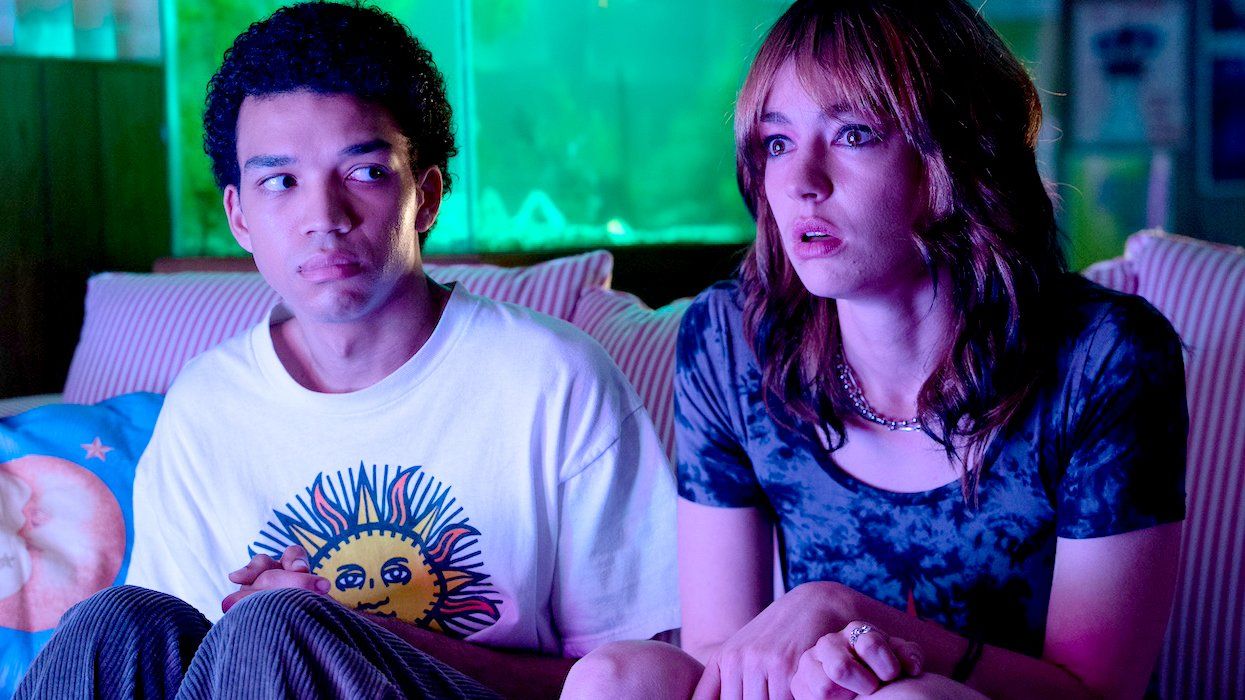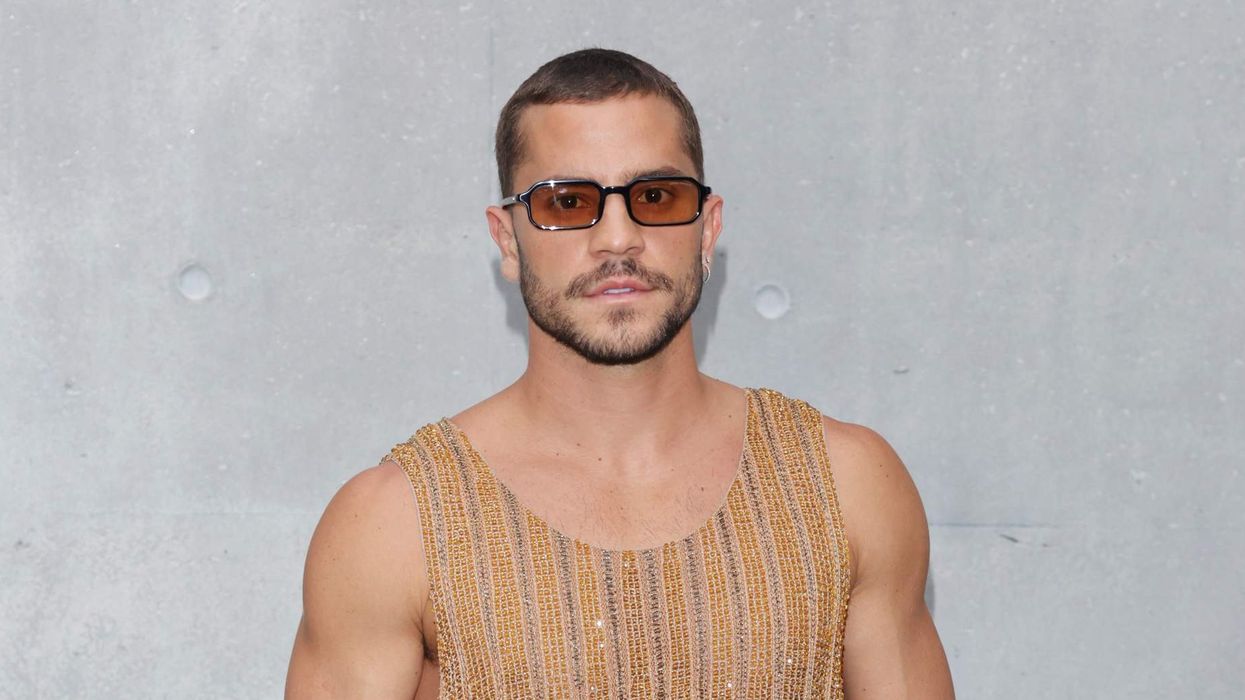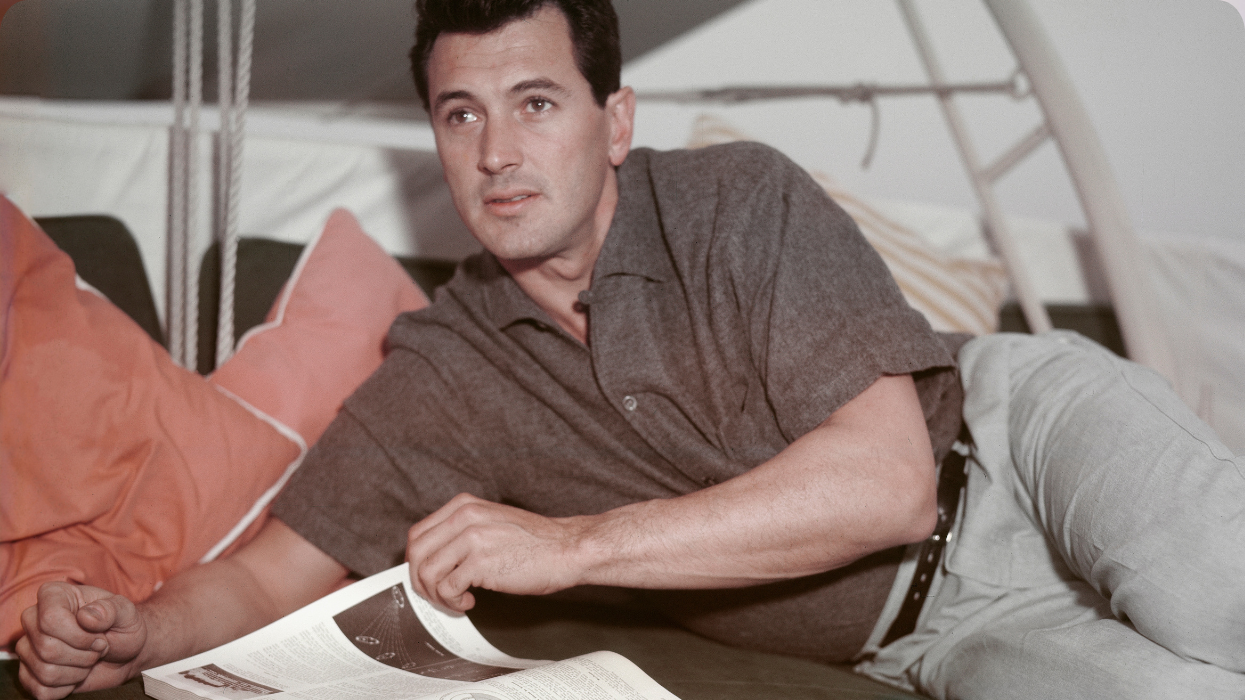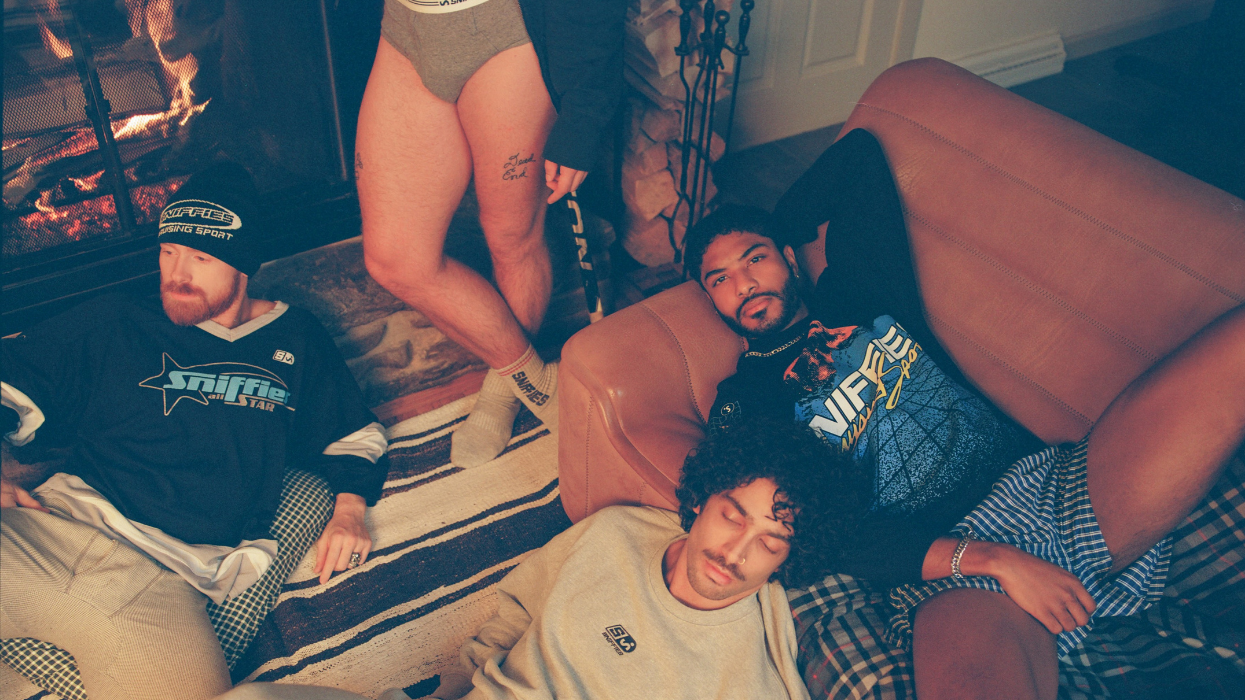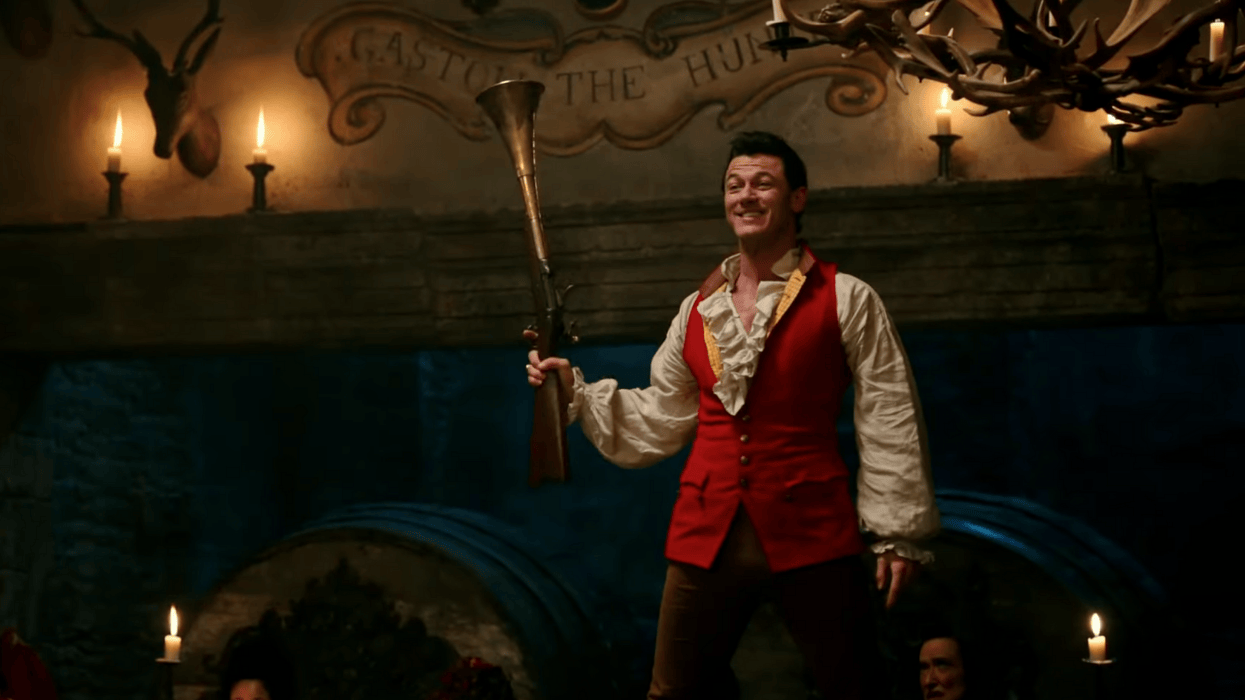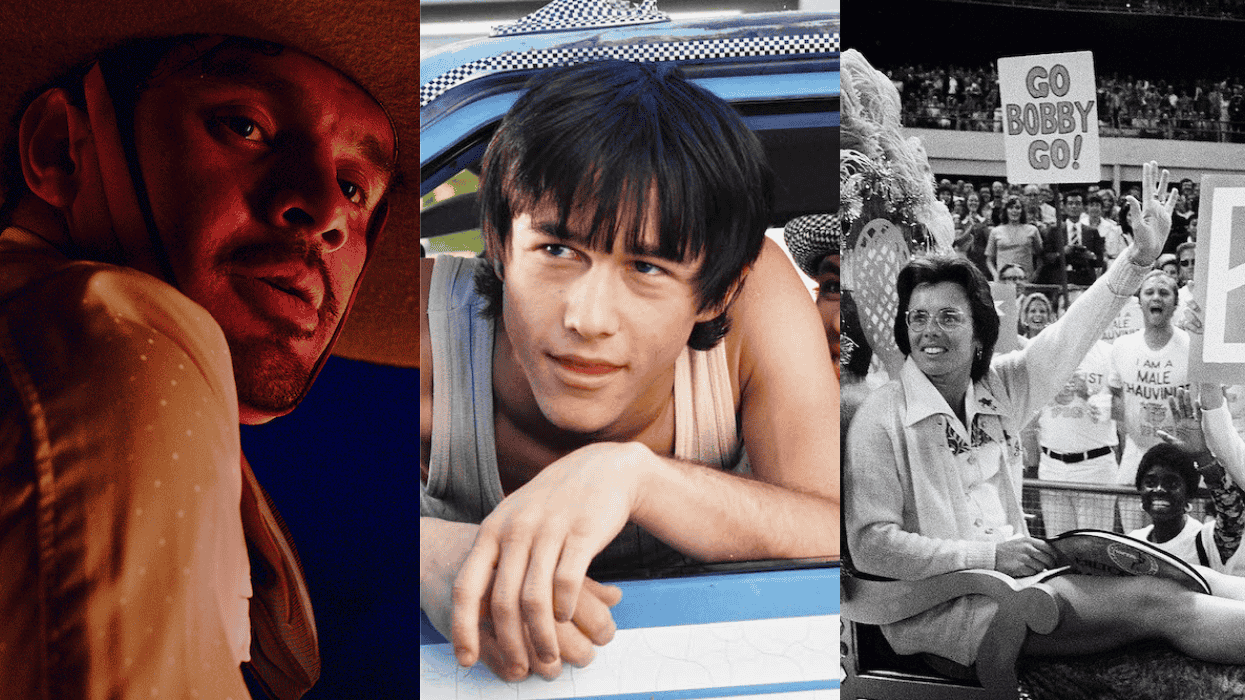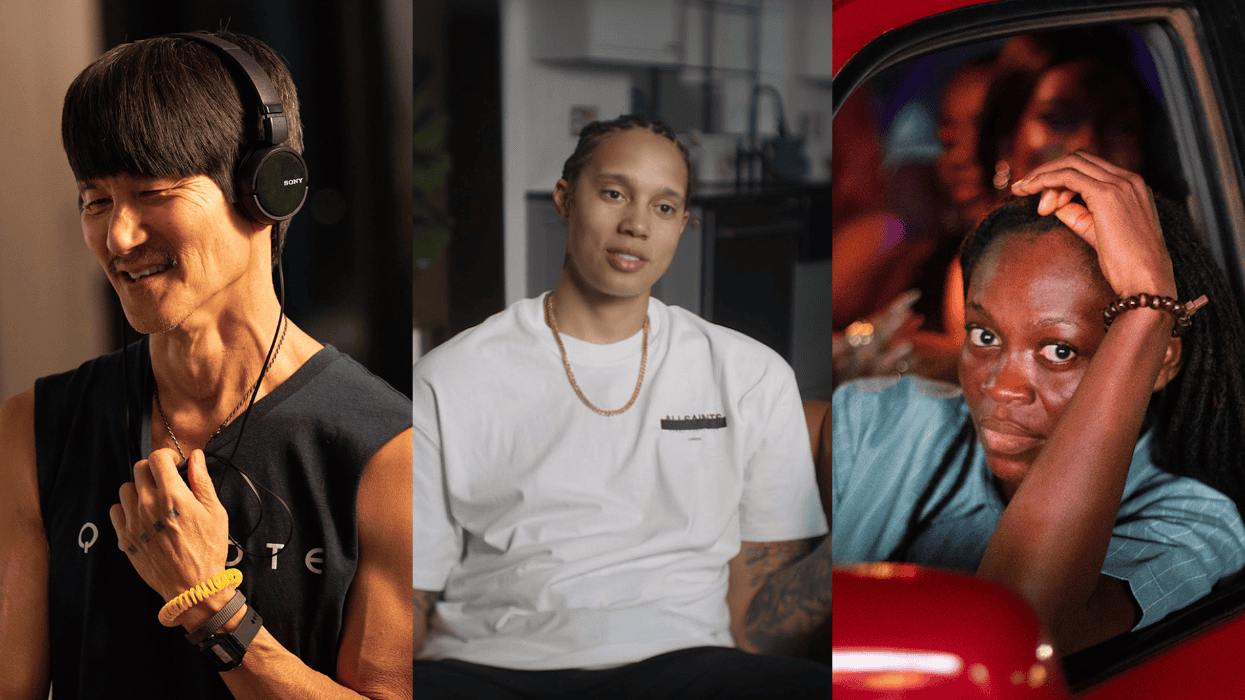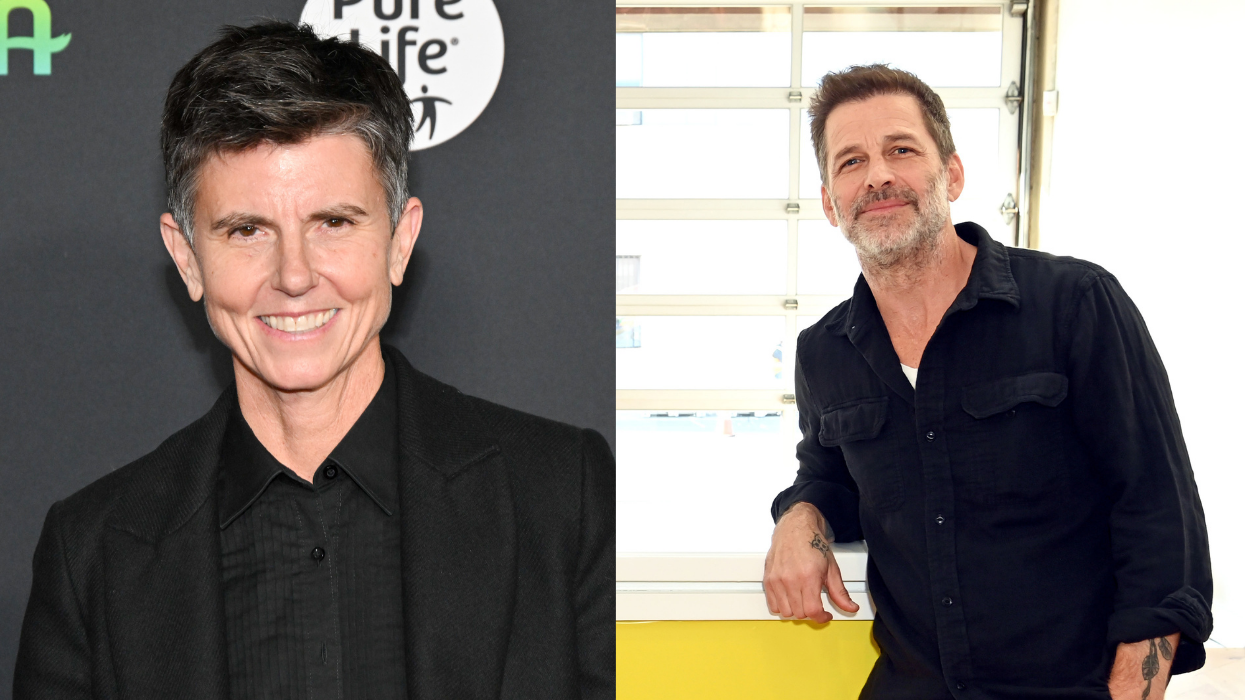Body horror, existential horror, and psychological horror have all been hallmarks of this film genre since its inception. They're also things that trans people become deeply intimate with as they grapple with gender and transition. So it's no surprise that, when a horror movie is told through a trans lens, it really flourishes.
That's the case with Jane Shoenbrun's new film I Saw the TV Glow, a haunting and visceral look at the trans experience told through the connection that two people have with a TV show from their childhoods.
For Schoenbrun, the parallels between their transition and a horror movie were obvious. In fact, they wrote this movie about two months into their physical transition.
"I had finally changed my name and I had finally started hormones," Schoenbrun says. "And my world as I knew it felt like it was over, which I think is one of the early transition feelings that gets carpeted over in more sort of handholding, Hallmark card-style movies about transition."
"It's actually a totally terrifying first realization, because you know that now you either have to continue hiding from yourself and not living the life you're supposed to be living, or you need to completely blow up any form of stability or belonging that you've established for yourself," they continue. "I was 30 years old and that was a terrifying prospect. So I wrote the movie in the immediate aftermath of all of that… while I was both for the first time in my life really running towards this thing that I knew I needed to be pursuing to survive, and also as I was dealing with all of the fallout and unpacking for myself. All of the ways that everything that I had thought I understood about home and even my sense of reality was now something that needed to be reassessed in a very visceral way."
For star Brigette Lundy-Paine, who plays disaffected youth Maddy in the film, the horrors of I Saw the TV Glow were extremely familiar.
"I think Jane did all of that tremendous work and had a script that was, for me at least, the blueprint of how to transition really," Lundy-Paine says. "And I knew [when] Jane [was] talking to me about the character, and what they wanted from someone to play this role, that they wanted someone who was really experiencing what it was like to be on the verge of transition, basically."
"I had, for a long time, been... I don't know, it just takes so long to figure out what you are, and you always think you've done it, and then you're tripping into some next catastrophe of identity. By the time that I started work on this, I was pretty sure like, 'Oh no, roller-coaster coming up. I'm trans!'"
"And this movie was like [putting my] hands up. I am safely in Jane's hands," they add. "This is the best depiction of this terror, but also this beauty and the possibility of freedom, and I'm just going to go for it."
Lundy-Paine's co-star, Justice Smith, says that playing a character who is a metaphor for the closeted trans experience got him to recontextualize the way he carried himself.
In the film, he transforms from a young, nervous, and curious teen to a broken shell of a man in his 50s. Smith is tremendous throughout I Saw the TV Glow, showing the pain of living in the wrong body that builds and builds over time.
"I loved this character because it was a de-evolution of a person. Most character arcs start with someone in a lower place and end with someone in a higher place, and this was the opposite," he says. "I loved this idea that his voice was detached from his body and me and Jane talked about it feeling stuck in his throat. And I also wanted to physicalize his discomfort in his skin, so a lot of his movements didn't have flow or sway. Like when he's walking with the cotton candy, his arm is stiff at his side."
"And then as he gets older, he's slowly dying," Smith continues. So I just thought about what does that look like? Well, it looks like my joints are tighter. It's harder to move. The asthma was written in as he gets older, his asthma gets worse and worse. I thought about what death feels like coming out of you, his breath, and it feels like a wheeze. It feels like those really long wheezes. All that stuff was fun because I felt like I was a little bit in a creature feature, getting to play a monster of my own, like a monster that Owen has created through himself for so long, he's turned himself into a monster."
"Throughout the film, Owen is being pulled by his need to assimilate in order to survive and his raw authenticity, and I think every marginalized person knows that experience," Smith says. "I know being queer in a predominantly hetero environment, being Black in a predominantly white environment, that is something that I'm continuously unpacking how to have the courage to face the backlash of authenticity. Because I think what Jane paints is that there's pain in ignoring yourself. So pain in accepting yourself and facing people's reactions of you accepting yourself. And I obviously think the path of authenticity, path of truth is the ultimate path of happiness, of joy, but it is rocky. It's not smooth sailing. It is hard, and it makes sense why people hide themselves for so long because at least the pain of hiding yourself is familiar. Jumping off the cliff into the unknown, to a different kind of pain. It's not as graspable."
The film is such a visceral and deeply affecting version of the trans experience that people have come out as trans immediately after seeing I Saw the TV Glow in theaters.
"It's happened a few times now. A number of people have come up to me in person after screenings, and I don't think it's the beginning of their gender journey. I think they're kind of like, 'That was the push over the edge that I needed,'" Schoenbrun says. "And that feels amazing. What else could you hope for as an artist?"
"I think it really speaks to how starved as a community we are for authentic portrayals of our internal experiences and internal experiences that just aren't talked about, especially not in pop culture spaces," they say. "They're spoken about on subreddits, but those subreddits are scary places to go when you're still figuring yourself out. And I really do hope that the work can speak to a large subsection of people, whether or not they're trans, to help them understand these feelings and experiences that I think are obviously real and also widespread, but haven't really been allowed to the surface in our culture."
I Saw the TV Glow is now playing in theaters.


